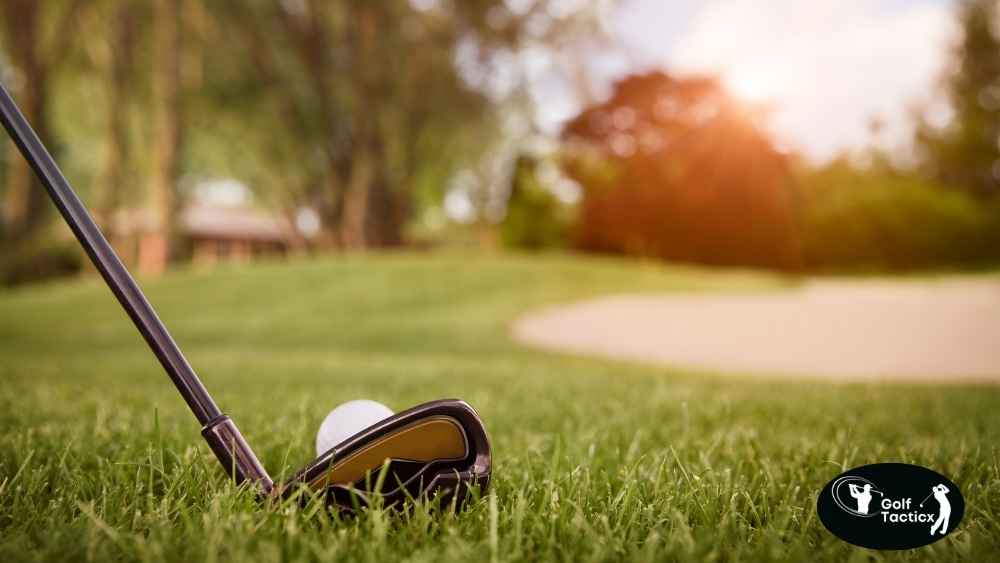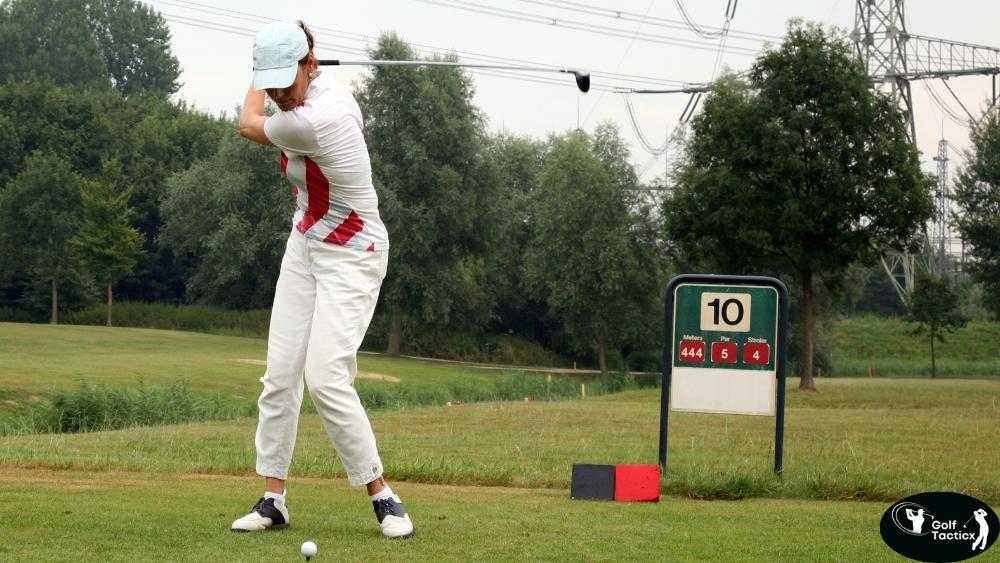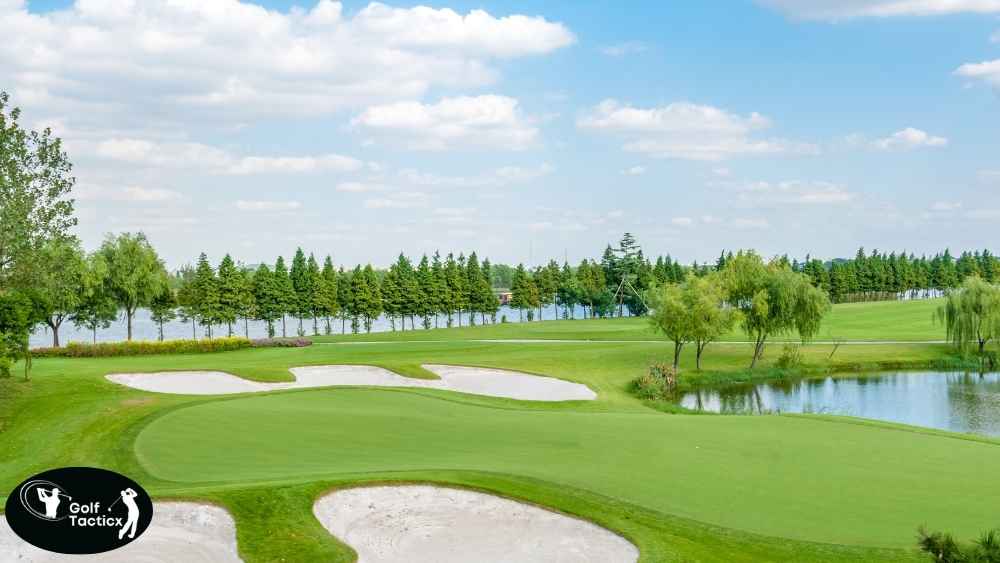In our previous lessons, we’ve covered how to execute precise trajectory control, consistently hit low-spin stinger shots, and shape shots around obstacles with full control. Today, we’re diving into an essential aspect of golf that can significantly impact your performance: adjusting your shot-making based on different turf conditions.
Understanding how various turf types affect your shots will help you navigate the course more effectively and make smarter decisions. Mastering how to Adjust Golf Shot for Turf Conditions can elevate your game, whether you’re playing on a lush fairway, a soggy rough, or a hard-packed bunker.
By learning to read the ground and tweak your stance, swing, and club choice, you’ll gain confidence in any situation. This guide will break down practical tips to help you adapt to wet, dry, or uneven surfaces, ensuring you’re ready to Adjust Golf Shot for Turf Conditions and lower your scores with ease.
Understanding Turf Conditions
Turf conditions refer to the type and state of the grass on the golf course, which can vary widely. The main types include:
Bermuda Grass: Common in warmer climates, Bermuda grass is known for its dense texture and can be challenging to play on when wet.
Bentgrass: Often found in cooler regions, Bentgrass provides a smooth surface but can become firm and fast, especially in dry conditions.
Poana Grass: Typically found in coastal areas, Poana grass can be unpredictable, affecting ball roll and shot consistency.
Ryegrass: Common in cooler climates, Ryegrass offers a soft feel but can become slippery when wet.
Each type of grass reacts differently to weather conditions, influencing how the ball interacts with the surface.
How Turf Conditions Affect Your Shots
The state of the turf can impact your game in several ways:
- Ball Lie: The firmness or softness of the ground affects how the ball sits. A ball in thick, lush grass may be harder to strike cleanly, while a ball on firm turf might be easier to hit but could lead to more roll after landing.
- Club Selection: Wet or soft conditions may require you to use a lower lofted club to prevent the clubface from digging into the turf. Conversely, firm conditions might allow for higher lofted clubs.
- Shot Trajectory: Wet conditions can cause the ball to fly lower and with less spin, while dry conditions might result in higher trajectories and more roll.
Adjusting Your Technique for Different Turf Conditions
To adapt your shot-making to various turf conditions, consider the following adjustments:
Ball Position:
- Soft Turf: Position the ball slightly back in your stance to ensure a clean strike.
- Firm Turf: Place the ball slightly forward to promote a sweeping motion.
Swing Path:
- Wet Conditions: Focus on a shallower swing path to avoid digging into the turf.
- Dry Conditions: A steeper swing path can help in making solid contact.
Club Selection:
- Soft Turf: Use clubs with more bounce to prevent the leading edge from digging.
- Firm Turf: Clubs with less bounce can be effective for cleaner contact.
Grip Pressure:
Maintain a relaxed grip to allow for natural shot shaping and to prevent the club from getting stuck in the turf.
Practical Drills to Adapt to Turf Conditions
Incorporating specific drills into your practice routine can help you adjust to different turf conditions:
Soft Turf Practice Drill
Place a towel or soft mat under your ball to simulate wet conditions. Practice hitting shots with a slightly steeper swing path to avoid digging into the turf.
Firm Turf Practice Drill
Hit shots from a firm surface, focusing on a shallower swing path to promote a sweeping motion. This helps in adapting to hard fairways.
Ball Position Adjustment Drill
Practice hitting shots with the ball positioned slightly back and forward in your stance to understand how ball position affects your shots on different turfs.
Swing Path Adjustment Drill
Use alignment sticks to guide your swing path. Practice hitting shots with a shallower path for wet conditions and a steeper path for dry conditions.
Grip Pressure Control Drill
Practice hitting shots with varying grip pressures to find the optimal tension that allows for natural shot shaping and prevents the club from digging into the turf.
Common Mistakes to Avoid
Be mindful of these common errors when adjusting to different turf conditions:
Overcompensating: Making drastic changes to your swing can lead to inconsistency. Focus on subtle adjustments.
Ignoring Turf Type: Not considering the specific grass type can result in misjudgments. Always assess the turf before your round.
Inconsistent Practice: Failing to practice under various turf conditions can leave you unprepared. Regularly practice on different surfaces to build adaptability.
Equipment Considerations
Selecting the right equipment can aid in adjusting to different turf conditions:
Wedges: Wedges with higher bounce are beneficial for soft turf, while those with lower bounce are suitable for firm conditions.
Irons: Irons with a wider sole can help prevent digging into soft turf, whereas narrower soles are effective on firm surfaces.
Recommended Wedges for Different Turf Conditions
Choosing the right wedge can significantly impact your performance on various turfs. Here are some options to consider:
Cleveland RTX ZipCore
Features a higher bounce, making it ideal for soft turf conditions.
Titleist Vokey SM8
Offers a variety of bounce options, allowing customization based on turf conditions.
TaylorMade Milled Grind 2 Wedge
The TaylorMade Milled Grind 2 Wedge is designed to provide exceptional feel and control, making it suitable for various turf conditions. Its milled sole ensures consistent turf interaction, while the raw face technology enhances spin and precision. This wedge is available in different finishes, including satin chrome, to suit your aesthetic preferences.
Conclusion
Adapting your shot-making to different turf conditions is crucial for improving your golf game. By understanding how various grass types and ground firmness affect your shots, you can make informed decisions on the course. Remember to practice regularly under different conditions, adjust your technique as needed, and consider your equipment choices to enhance your performance.
To excel in Adjusting Golf Shot for Turf Conditions, observe how weather, like rain or drought, alters the ground and practice tweaking your stance or swing speed accordingly. Experimenting with ball position on wet or firm surfaces can also sharpen your ability to Adjust Golf Shot for Turf Conditions, ensuring cleaner strikes and better control.
Over time, these adjustments will boost your confidence across diverse terrains. Up next, we’ll shift our focus to Mastering Your Wedge Distances, where you’ll learn how to dial in your yardages and take control of your scoring game.
















Leave a Reply